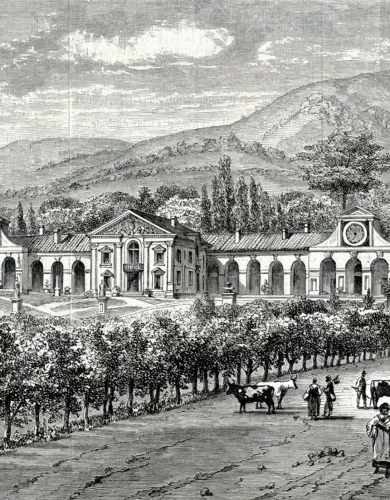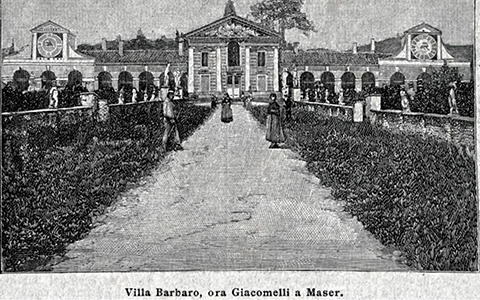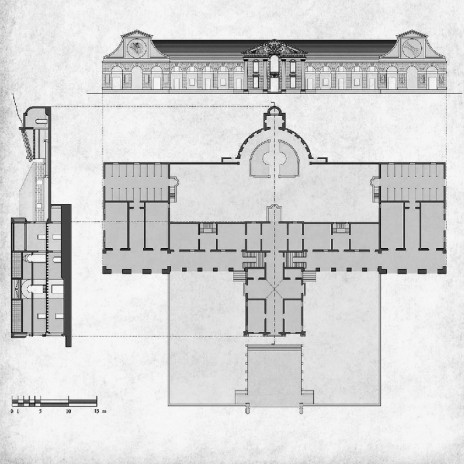
Historical Overview of
Villa di Maser
View of Villa di Maser drawing by Félix Thorigny second half of the XIX century
Historical Overview
Among the most renowned works of Andrea Palladio (1508-1580), Villa di Maser is also one of the most significant Renaissance country residences in Italy, representing the pinnacle of collaboration between architect and patrons. Built around 1554-55 on a pre-existing country house, the villa was intended for the management of the estates of two prominent members of Venetian nobility, the brothers Daniele and Marcantonio Barbaro.
Its agricultural function is emphasized by the barns, the fishpond, and the dovecotes, and once also by the orchard "very large, and full of excellent fruits and various wild ones" mentioned by Palladio in his Four Books of Architecture (1570, II, p. 51).
The residence also had a humanistic connotation, linked to the antiquarian interests of the Barbaro family, connoisseurs of art and architecture, particularly Daniele, who authored the first vernacular edition of Vitruvius’ De architectura (1st century BC), illustrated by Palladio (1556).
Palladio himself advocated for the principles of country life, both productive and spiritually restorative, in the Four Books, where he wrote that the "gentleman" will cultivate the possessions "with industry and the art of agriculture," but will also be able to "quietly [...] pursue studies in literature and contemplation" as "the ancient sages" used to do (II, p. 45).


Architecture and Nature
The position of the building along a slope, a unique case among Palladio's designs, was ingeniously utilized for the water system and to connect the main floor with the scenic hemicycle of the Nymphaeum carved into the hill behind. The relationship between architecture and landscape, and more broadly between artifice and nature, is the underlying theme of the project, reflected in the rich decorative apparatus of the Nymphaeum and in the sumptuous cycle of frescoes inside the residence, by Paolo Veronese (1559-1561).
The sundials at the ends of the barns, related to Daniele’s scientific interests, author of the treatise De Horologiis, reaffirm the union between human ingenuity and the natural world, marking the time of man and the passing of seasons with the solar cycle.
View Interventions
Other interventions on the Restoration and Enhancement Project of the garden of Villa di Maser in Maser concern the restoration of the nymphaeum, the restoration of the green spaces, the refitting and repositioning of the stable and the restoration of the greenhouses.
